Montrealers are heading to the polls on November 2 to elect a new mayor. While the citizens have the democratic privilege of voting, the Dead certainly do not. As such, Haunted Montreal will be representing them and making demands to the mayoral candidates on their behalf. Generally-speaking, the Dead want two things: to be remembered and to be respected.
Welcome to the seventeenth installment of the Haunted Montreal Blog! Released on the 13th of every month, the September 2016 edition focuses on research we are carrying out on Sainte-Famille Street, where a poltergeist has long been blamed for a paranormal mystery that has been tying people’s knickers into knots since 1929. We are also pleased to announce our 2016 Hallowe’en Season with our new Haunted Red Light District Ghost Walk! Please see the Company News for information about the tour and how to book tickets.
Haunted Research
Located in the McGill Ghetto, Sainte-Famille Street is a rare beauty. The bucolic, tree-lined streetscape features stunning Victorian architecture and blissful quietude. Maple, oak, lilac, ginko, and cedar trees overshadow small garden plots bursting with flowers.
At the northern end of the street sits the beautiful, historic chapel of the Hôtel-Dieu Hospital. It almost seems like a utopian oasis quaintly tucked into an urban environment.
However, a paranormal mystery has long-plagued this exquisite street. Since the summer of 1929, mysterious knots have been appearing in one of the homes, tying up curtains and bedsheets and the like. According to various reports, some residents blame the unsolved mystery on a poltergeist.
Apparently the poltergeist was first detected in 1929 on the section of Sainte-Famille Street located between Prince Arthur Street and Pine Avenue. With rumours swirling on the internet, there are many different versions of the tale. Some place the home on Prince Arthur Street, but more trusted sources have it located on Sainte-Famille.
So intriguing was the tale of the poltergeist to author Pat Hancock, that in 2003 she decided to research and write a version of the story, entitled “Nightmare Knots”. Written for Scholastic Books, the story is featured in Haunted Canada 1.
In Hancock’s version of the tale, a young family living on Sainte-Famille Street became distraught in 1929 when knots began appearing in their towels, curtains and various other items in their home: “in sheets, pillowcases, tablecloths and dishtowels, in socks, shirts, dresses and trousers.” Before long, everything that could be knotted was tied into small, tight knots.
The family was frantic and unsure whether it was all the work of a practical joker or something more sinister. The parents began spying on the children and then on each other, but were unable to find any logical answer as to who was tying the cursed knots. Embarrassed and confused, they did not want the bizarre story to reach the general public.
However, a journalist somehow learned about the story and attempted to interview the parents, who insisted on complete anonymity in the final publication. At the end of their wits, the parents contacted religious authorities and asked for some priests to come and bless their home. Two priests arrived from St. Patrick’s Church and attempted to exorcise the spirit, but unfortunately they were unsuccessful.
One family member told the journalist: “The spiritualists who came there said that somebody must have cast a spell on the place.” As a last resort the family finally called the cops.
When the police arrived, they were perplexed and did not understand how the knots could have appeared. They searched the home, top to bottom, and interviewed all members of the family separately. One officer thought he detected a foul odor in the basement, raising suspicions that a body had been buried there, which might have accounted for the haunted activity. Using spades and shovels, the police dug up much of the basement but did not discover a decomposing corpse or anything else unusual.
According to the author, the police then devised a plan: “Officers left several handkerchiefs in one of the rooms, and locked and sealed the door behind them.” When they returned the following morning and broke the seal, they were baffled to find the handkerchiefs all tied up into knots. Next, the police separated family members again and asked them to tie things into knots. They then compared the knots tied by family members with those found in the handkerchiefs in the room they had sealed. Apparently the police felt that the knots tied by the youngest daughter looked eerily similar to the ones discovered in the handkerchiefs and put the blame on her. They suggested she had probably tied them in a “trance-like state” and decided to close the investigation.
The family members were perturbed because it was logically impossible for their daughter to have tied the knots because the room had been sealed. The family finally decided to move out. One member put their paranormal ordeal in perspective, saying: “And it was terrible. It put knots in everything. I wouldn’t live in that house again for a million dollars.”
In Hancock’s version of the story, the knots stopped appearing in the home after the police investigation. She asks: “Did a ghostly double of the young girl haunt the house for those few months in 1929?”
Others believe that the knots did not stop getting tied in 1929, but rather continued after the family had finally moved out. Apparently, several years later a new tenant maintained that he would also find knots tied in his curtains and bed sheets.
Furthermore, many versions of the tale blame the knot-tying on a tormented poltergeist. The term “poltergeist” comes from two German words (polter: to make noise by throwing or tumbling around, and geist: ghost or spirit). The literal translation of the term is therefore “noisy ghost.” While tying knots is generally not seen as a noisy activity, poltergeists are known to wreak all sorts of havoc and it is unlikely one would disappear simply because of a questionable police investigation.
According to Dr. John Ankerberg and Dr. John Weldon of the Ankerberg Theological Research Institute: “Poltergeists are commonly interpreted as troublesome ghosts which haunt houses, causing disturbances and a variety of problems for those who live there. Casual observers often see them as harmless and intriguing or “entertaining” spirits while naturalists and materialists often view them as simple hallucinations.”
Before theorizing why a poltergeist might haunt one of the homes on Sainte-Famille Street, it is a good idea to explore the history of the area.
During the era of New France, French colonists had originally named the plateau-like area at the south-eastern foot of Mount Royal “Mont Sainte Famille“. Sainte Famille can be translated as “Holy Family”, and it was a popular name in ultra-Catholic New France because it refers to the trinity of St. Joseph, Mary and the Baby Jesus.
Members of the Basset family were the first people to own the site and they cleared the land for farming. In 1730, they ceded it to Les hospitalières de Saint-Joseph, a Catholic organization who used the fertile lands for agriculture to supply the Hôtel-Dieu Hospital, then located within the walled city. Following the British Conquest of 1760, wealthy families from Montreal began to acquire the adjacent lands in order to build luxurious villas on the slopes of Mount Royal.
In the early nineteenth century, the city expanded towards the sloping terrace then called Côte-à-Baron, which was the southern boundary of the Mont Sainte Famille area. Starting around 1840, large estates were subdivided and a few isolated houses were constructed, but the area remained sparsely built. Major urban development only began to appear in 1859, when the Les hospitalières de Saint-Joseph started building a new Hôtel-Dieu Hospital on their land located at Mont Sainte-Famille.
The original Hôtel-Dieu Hospital was founded by nurse Jeanne Mance in what is now Old Montreal, on October 8, 1645. Unfortunately, the hospital was prone to catching fire in the dense neighbourhood, and burned down on three separate occasions. As it continued to grow in size, the hospital moved to its present site near Mount Royal in 1861.
The fresh mountain air was seen as being ideal for recovering patients and a beautiful healing garden was laid out behind the hospital. Not only did the living nuns and patients move to new hospital on the mountain, but they also took all of the remains of the deceased nuns, who were transferred to the chapel’s crypt of the new hospital at the end of Sainte-Famille Street. 178 nuns had died over the span of two centuries, however only 23 coffins were needed to transport all of their dusty, skeletal remains.
Sainte-Famille Street was laid out in 1862 in the middle of the property and led directly to the chapel of the Hôtel-Dieu Hospital. Between 1862 and 1864 the religious order gave the City lands south of their hospital in order to open of new streets to attract residents. Hundreds of buildings were erected in the new residential area and the coming of the horse-drawn tram in the 1860s accelerated urbanization. By 1880, the area was fully built up.
Today, the chapel is a dominant feature on the streetscape. Located beside the chapel is the Musée des Hospitalières de l’Hôtel-Dieu de Montréal, a museum devoted to the history of the hospital, where visitors can see a magnificent wooden spiral staircase and learn more details about the city’s oldest hospital.
Over the centuries, the Hôtel-Dieu Hospital has overseen thousands of deaths, many of them caused by tragedies, epidemics and violence. According to some local residents, it has the feel of an extremely haunted location.
Also, not to be forgotten, on northern end of Sainte-Famille Street is the old D’Arcy McGee High School. Opened on September 21, 1931, it was the first high school that catered to English-speaking Catholic students in Montreal. Because most of the students had Irish roots, the school was named in honour of Thomas D’Arcy McGee.
A Father of Confederation, the statesman and journalist of Irish descent was assassinated in Ottawa on April 7, 1868, allegedly by a man named Patrick James Whelan. While Whelan’s ghost is said to haunt the old Carleton County Jail in Ottawa (now a youth hostel), students used to spread rumours that the ghost of Thomas D’Arcy McGee himself would sometimes haunt the corridors of the school that was named in his honour. Unexplained mysteries, such as phantom footsteps and disembodied voices, were frequently attributed to his ghost. Over the decades, the D’Arcy McGee High School educated hundreds of young students, but with declining enrollment, it was shuttered in 1992. The abandoned school was then converted into a condominium complex for wealthy residents.
Meanwhile, on the southern end of the stretch in question a giant mural has recently been painted on the side of a building on the south-west corner of Prince Arthur Street. Some residents believe the mural was inspired by the mysterious knots that make Sainte-Famille Street so infamous.
There is much speculation about hauntings on Sainte-Famille Street, and nobody has any solid answers. That the haunting first appeared in 1929 is interesting historically because that is the year the Great Depression began wreaking havoc on the city’s economy. With the collapse of the Stock Market in October of that year, many families were ruined and forced into destitution. Some stock brokers and businesspeople who lost everything are reported to have committed suicide. Could the poltergeist be related to someone who took their own life during the economic crash?
Others believe the nearby crypt and hospital, along with their macabre history, may be responsible for the appearance of the poltergeist. Others still think the ghost of Thomas D’Arcy McGee has something to do with it. There is definitely no consensus.
One elderly man, who prefers to remain anonymous, has lived on Sainte-Famille Street for almost 30 years. He suggested that the poltergeist rumour is well-known among neighbours: “People were talking about the mysterious knots long before I moved onto this street and they still talk about it to this very day. Because nobody knows the exact address of the poltergeist house, it has always been a bit of a game or a past-time to look for knots in the curtains of the windows of the homes to try and solve the mystery.”
Furthermore, it is not only the residents in search of the paranormal knots, but also curious visitors who want to find the haunted house. It is not uncommon for strangers to walk slowly up the street, scrutinizing buildings and peering into windows. The elderly gentleman said: “Long before Pokemon Go started irritating people, we have had to deal with endless Peeping Toms on our street in search of those cursed knots. Many of the residents tired of it and replaced their curtains with blinds or shutters.”
Indeed, wandering up and down Sainte-Famille Street reveals that most of the windows do not have curtains or drapes, but rather coverings which cannot be knotted, such as Venetian blinds or wooden shutters.
Did the residents get fed up with curiosity-seekers peering into their windows, as suggested by the gentleman?
Whatever the case, whether or not a poltergeist is still active on the street, tying knots in one of the homes, is a matter of pure speculation. There just isn’t enough evidence at this time. Only one thing is certain: to this day, the “nightmare knots” of Sainte-Famille Street are one of the most puzzling and unsolved mysteries in Montreal’s McGill Ghetto.
Company News
For the Hallowe’en Season, Haunted Montreal is pleased to announce a brand new ghost tour: the Haunted Red Light District Ghost Walk!
Today, Montreal’s Quartier des Spectacles is famous as a zone for festivals and entertainment. However, most visitors are unaware the most notorious Red Light District in North America once existed on the same site. Not only does it have a very dark and salacious history, but many of its buildings and streets are also reported to be haunted.
Step back in time and experience Montreal in its heyday as a “wide open city”! Discover an era when brothels, gambling dens, booze cans and burlesque halls lined every street and corruption of every type reigned. Guided by a professional actor and storyteller, guests will hear twisted tales and visit sites that are reputed to be haunted and where the ghosts have been spotted.
Hear tales about Montreal’s transformation from a strictly religious colony into Sin City and how the clergy tried to stop it at every turn. Visit one of Montreal’s ghost streets, where paranormal activity is known to disturb tourists exploring the neighbourhood. Learn about Montreal’s Red Light history and how Prohibition prompted millions of visitors to stream in from all over North America looking for a good time.
Discover a haunted hotel where guests experience strange disturbances during the night, thought to be related several murders during the 1980s. Examine an old church that is said to be haunted by its founder, who still visits the parishioners to this very day, albeit in a paranormal manner.
Many theatres, cinemas and performance halls in the Quartier des Spectacles are also rumoured to be haunted. Learn about the spirits that occupy these places, including one creepy apparition who is said to lurk in the basement of the Monument-National, once the site of a deranged Victorian waxworks museum – the Eden Musée.
Hear about some of the notorious characters from the era, such as bank robber Machine-Gun Molly, Burlesque Queen Lili St. Cyr, brothel-owner Marcel Les-Dents-en-Or, and serial killer Dr. Thomas Neill Cream, McGill University’s most infamous graduate.
Learn why the Canadian Army demanded that the Red Light District be shut down during WW II and how Mayor Jean Drapeau and police chief Pax Plante tried clean up the unsavory area. Discover how brothel raids, legal battles against corruption, the demolition of entire city blocks, and the rebranding of the entire neighbourhood led to the creation of the Quartier des Spectacles, Montreal’s glittering new Entertainment zone. While officials may have tried to erase the district’s history and stop all salacious activities in the area, the ghosts of the Red Light District still remain.
The Haunted Red Light District Ghost Walk is sure to please ghost hunters, history buffs, Hallowe’en lovers and those who seek pleasure in the paranormal. The following dates have been set in English:
Friday, October 14 8:30 pm Haunted Red Light
Saturday, October 15 8:30 pm Haunted Red Light
Sunday, October 16 8:30 pm Haunted Red Light
Friday, October 21 8:30 pm Haunted Red Light
Saturday, October 22 8:30 pm Haunted Red Light
Sunday, October 23 8:30 pm Haunted Red Light
Friday, October 28 8:30 pm Haunted Red Light
Saturday, October 29 8:30 pm Haunted Red Light
Sunday, October 30 8:30 pm Haunted Red Light
Monday, October 31 8:30 pm Haunted Red Light
To book tickets, please visit our 2016 Tours section.
Haunted Downtown is currently being revised before translation, but is still available for private tours for groups of 10 or more people (in English only, for the moment). Haunted Griffintown and Haunted Mountain are also available for private bookings, in both English or French, subject to availability.
Finally, we invite clients who attended a ghost walk to write a review on our Tripadvisor page, something that is very helpful for Haunted Montreal in promoting its tours.
For those reading the blog who want to receive a new Montreal ghost story on the 13th of every month and stay updated, please sign up to our mailing list.
Coming up on October 13: Haunted St. Lawrence Burial Ground
In September, 2016, dozens of skeletons were discovered buried underneath René-Lévesque Boulevard in front of the Hydro-Québec headquarters during construction work. This was the location of the St. Lawrence Burial Ground, a Protestant cemetery that served the community from 1797 until the early 1870’s. After being abandoned, a beautiful park called Dufferin Square was laid out on the footprint of the old graveyard. In 1978, the park was expropriated and work began on Complexe Guy-Favreau, a federal government building that was partially built on the old St. Lawrence Burial Ground. Over the years, more than 100 skeletons have been removed from the vicinity, including that of university-founder James McGill. Today, there is no indication of the cemetery’s existence, except when digging up the road. In the October edition, learn about the ghosts that are said to haunt the old St. Lawrence Burial Ground and the endless paranormal activity that workers at Complexe Guy-Favreau must contend with to this very day.
Donovan King is a historian, teacher and professional actor. As the founder of Haunted Montreal, he combines his skills to create the best possible Montreal ghost stories, in both writing and theatrical performance. King holds a DEC (Professional Theatre Acting, John Abbot College), BFA (Drama-in-Education, Concordia), B.Ed (History and English Teaching, McGill) and MFA (Theatre Studies, University of Calgary).

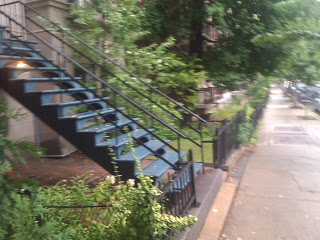
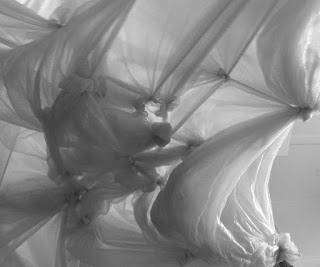
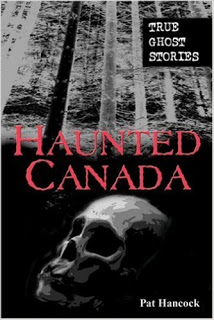


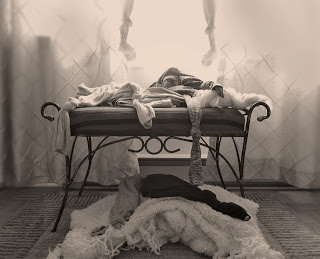


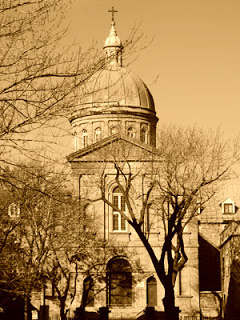
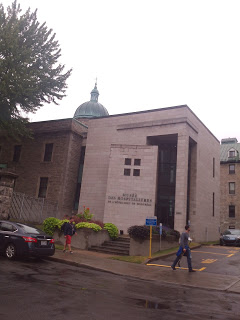
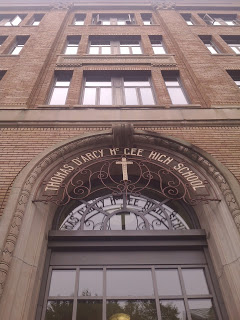
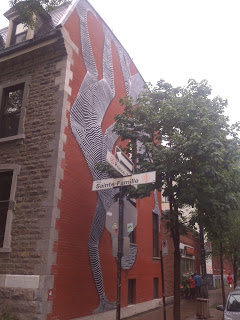
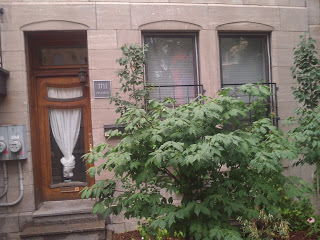
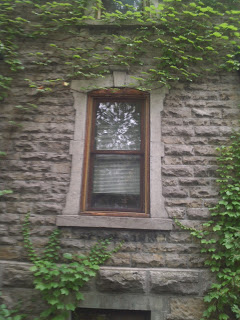
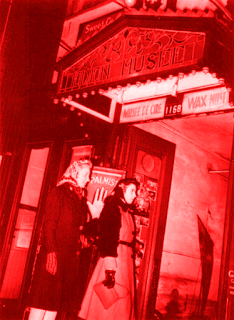
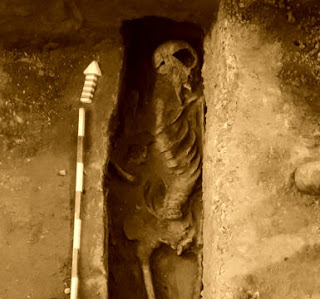


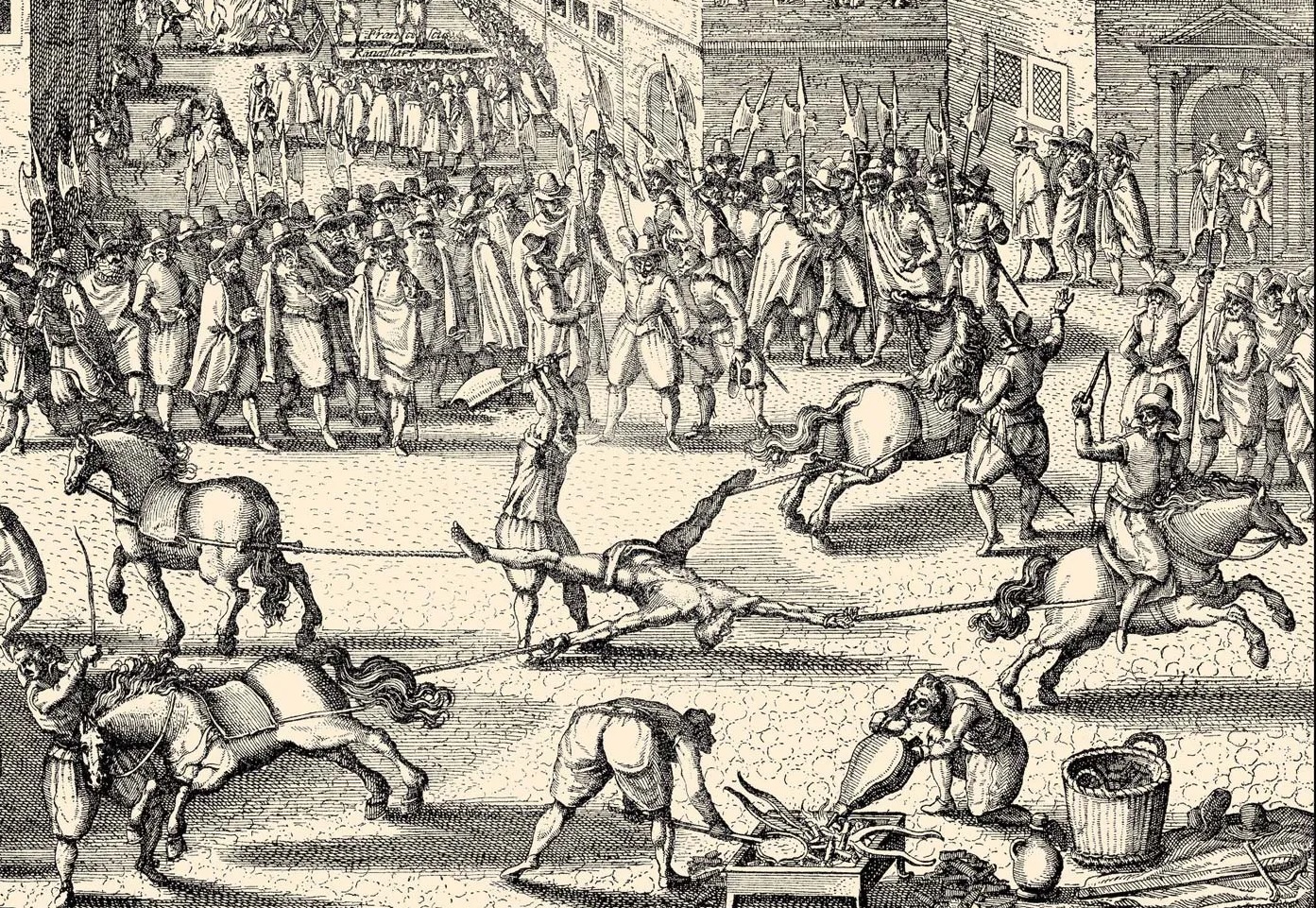
Vraiment très très très intéressant toutes ces histoires-là mais pour avoir vécu 4 ans sur la rue Ste Famille, juste avant le D'arcy collège, jamais je n'avais entendu parler de toutes ces histoires de fantômes qui font des noeuds etccc…De plus, nous y avons habité 5 personnes dans ce logement sur Ste Famille ?!?!?Et jamais nous avons eu vent de quoique ce soit ( de 1970-1974 ). Bref, merci beaucoup pour cette lecture qui m'a énormément intéressé !!!
Vraiment très très très intéressant toutes ces histoires-là mais pour avoir vécu 4 ans sur la rue Ste Famille, juste avant le D'arcy collège, jamais je n'avais entendu parler de toutes ces histoires de fantômes qui font des noeuds etccc…De plus, nous y avons habité 5 personnes dans ce logement sur Ste Famille ?!?!?Et jamais nous avons eu vent de quoique ce soit ( de 1970-1974 ). Bref, merci beaucoup pour cette lecture qui m'a énormément intéressé !!!